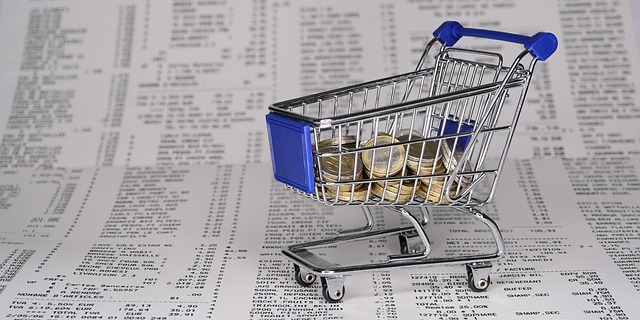Understanding the Concept of a Personal Mission Statement
A personal mission statement is more than just a vague collection of dreams and aspirations. It’s a vivid declaration that defines your core values, guides your actions, and provides clarity in your life choices. When you sit down to craft this powerful tool, you really dig deep into who you are as a person. Consider it like your North Star; it serves as a constant reminder of your purpose and your ultimate goals. This is especially important in an age where distractions abound. With so many things pulling at your attention daily, it’s crucial to have a solid foundation that helps you make informed decisions. In this exploration, we will unwrap the layers that surround personal mission statements and dive into the specific steps you can take to develop one that truly resonates with you. Let’s journey together through this essential aspect of personal development, goal setting, and beyond.
Why You Need a Personal Mission Statement
One might wonder, “Why should I invest time into creating a personal mission statement?” The answer lies in the unparalleled clarity that this statement can bring to your life. First off, having a personal mission statement allows you to align your daily actions with your long-term vision. It acts as a guiding compass, helping you navigate through life’s complexities. For example, if your mission statement emphasizes community service, you may find yourself gravitating toward opportunities that foster social responsibility. This natural inclination towards actions that resonate with your mission leads to increased fulfillment and happiness.
Moreover, a personal mission statement can serve as an anchor during turbulent times. Life is unpredictable, and while some days may bring positivity, others can be marred by challenges and setbacks. When obstacles arise, revisiting your mission statement reinforces your resolve. It reminds you why you started on your current path and re-energizes your commitment to your goals. In essence, it acts as your safety net, encouraging you to rise whenever you fall. In a world that often emphasizes external validation, your personal mission statement provides internal motivation. You are either living in alignment with it or drifting away from it. These contrasts serve as powerful indicators for reflecting and adjusting both your actions and attitudes. So, as you can see, the significance of having a personal mission statement cannot be overstated.
Steps to Begin Crafting Your Personal Mission Statement
Now that you understand the value of a personal mission statement, it’s time to roll up your sleeves and get to work! The first step involves deep introspection. Grab a notebook, find a quiet space, and truly reflect on your life thus far. Ask yourself probing questions like: What are my core values? What do I want to achieve in my lifetime? What brings me joy and fulfillment? Take your time here; there’s no need to rush. This exercise isn’t about quick answers; rather, it’s about uncovering the real essence of who you are. To dig deeper, you can also contemplate past experiences that shaped your life choices. What lessons did you learn from these moments that can serve as guideposts in your journey?
Next, outline your short-term and long-term goals. Separate these into categories: professional, personal, and social. Prioritizing your goals gives you a clearer framework to work with. While short-term goals may change frequently, long-term aspirations typically remain more static. This multifaceted approach allows you to see where they converge and diverge, eventually feeding into your mission statement. Think of this stage as sketching a rough blueprint of your future. It helps to visualize your dreams and relates them directly to your core beliefs. Keep referring to your earlier reflections; they are your foundation.
Writing Your Mission Statement
With a clearer understanding of your values and goals, it’s time to distill this information into a cohesive mission statement. Begin by drafting a few sentences that capture the core of what you’ve uncovered. Aim for clarity, ensuring that each sentence resonates with your beliefs. You might find it helpful to structure your statement around three fundamental areas: who you are, what you value, and what you aim to achieve. For instance, you could start with a statement like, “I am an advocate for environmental sustainability, striving to educate others while leading a life that minimizes my carbon footprint.”
Once you have a rough draft, take a step back and let it breathe for a few days. Return to it with fresh eyes and revise as necessary. It’s essential that your personal mission statement feels authentic and motivational. This statement should spark a sense of purpose when you read it. Share it with trusted friends or mentors for feedback, as they can provide alternative perspectives that may enrich your statement further. This isn’t about making it perfect; instead, it’s about making it true to you. Remember, your mission statement may evolve over time as you grow and change; be open to adjusting it as needed.
Embedding Your Personal Mission Statement into Daily Life
Creating a personal mission statement is only half the journey. The true test lies in how well you integrate it into your daily life. To begin this process, initialize consistent reminders. Perhaps you could write your mission statement on a sticky note and place it on your bathroom mirror or set it as the wallpaper on your phone. These everyday encounters can serve as micro-inspirations, prompting you to realign your actions with your stated mission. Additionally, consider incorporating your mission statement into your planning processes. For example, when you’re setting new goals, cross-reference them with your mission statement to ensure alignment.
Furthermore, don’t hesitate to revisit your statement regularly, especially during times of change or uncertainty. Whether you’re considering a new job, a move, or a significant life decision, always reflect on how these choices align with your mission. This practice cultivates mindfulness and awareness in your decision-making process. Moreover, as you anticipate life milestones, imagine how they tie into the broader context of your mission statement. Each small decision accumulates; before you know it, these choices will lead you closer to achieving your vision.
Formulating a System of Accountability
Accountability can be a game-changer when it comes to fulfilling your personal mission statement. So, weave a support system around yourself. Connect with friends, family, or mentors who believe in your mission. Share your goals and aspirations, and invite them to hold you accountable. A buddy system can work wonders—if you know someone is checking in on your progress, you’re more likely to stay engaged and committed. You could even create a personal development group where each member shares their mission statements and projects. Regularly discussing achievements and obstacles encourages a community of encouragement and constructive criticism.
Keeping a journal that tracks your progress can also be advantageous. Documenting your experiences allows you to evaluate which actions align with your mission and which do not. Your journal can become a space for reflection, helping you to analyze why certain paths resonate more than others. This written record not only clarifies your journey but also builds momentum toward achieving your aspirations. Celebrate your successes along the way, no matter how small. Every milestone is a step toward living out your personal mission, and acknowledging this growth reinforces your commitment.
Adapting Your Mission Statement Over Time
As you continue to grow and evolve, your personal mission statement will likely need adjustments. It’s crucial to recognize when these shifts occur. Changes in your personal circumstances, values, or interests can all necessitate a re-evaluation. Be proactive about this! Schedule periodic check-ins—perhaps every six months or annually—to reassess your mission statement. Ask yourself questions like: Have my values shifted? Are my goals still relevant? This reflective practice allows you to stay connected to your authentic self and ensures you do not lose sight of what matters most.
Furthermore, engaging in different experiences can be illuminating. Traveling, learning new skills, or even meeting a diverse range of people can influence your values and aspirations. All these factors contribute to our understanding of ourselves and the world around us. By incorporating new perspectives and insights, you enrich your personal mission statement, making it a living document that guides you through life’s ups and downs.
Conclusion – The Journey is Just Beginning
As we come to the end of this exploration, your personal mission statement is more than just a document; it’s an ever-evolving narrative of your life. Embrace the journey of crafting and revising your personal mission statement. Take it one step at a time, keep the dialogue open within yourself, and be courageous enough to live by the essence of your mission. Remember, it’s all about the next step and the next signpost leading you to your true north.
FAQ
What is a personal mission statement?
A personal mission statement is a declaration that outlines your core values, aspirations, and purpose in life. It serves as a guiding compass for making decisions and setting goals.
How can I create a personal mission statement?
To create a personal mission statement, reflect on your values and goals. Write down your thoughts and draft a statement structured around who you are, what you value, and what you want to achieve. Revise it until it feels authentic.
How often should I revisit my personal mission statement?
It’s beneficial to revisit your personal mission statement at regular intervals, such as every six months or annually, especially during significant life changes. This ensures it remains relevant to your evolving life.
Can my personal mission statement change over time?
Yes, a personal mission statement can change as you grow, acquire new experiences, or reassess your values and goals. It is a dynamic statement that should reflect your authentic self.
Why is accountability important for my personal mission statement?
Accountability helps you stay committed to your personal mission statement. Seeking support from friends or mentors can provide motivation and encouragement to keep you on track towards your goals.



